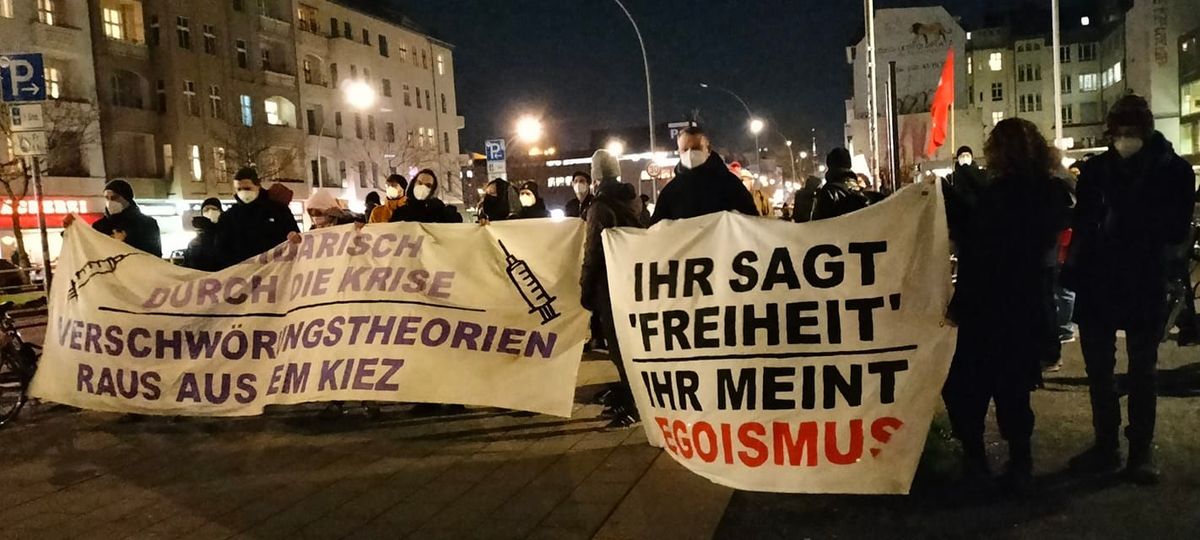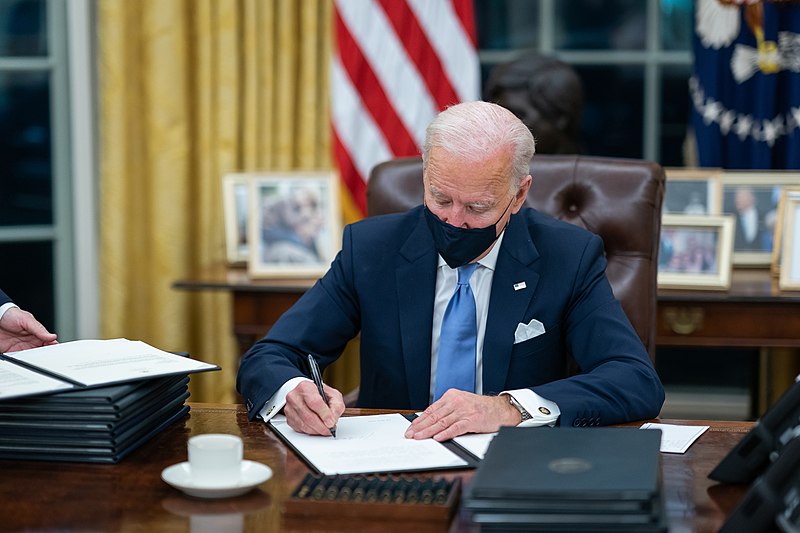After much bluster, the Berlin Humboldt Forum finally agreed to return its collection of the ‘Benin Bronzes’ to its native Nigeria. What are these Bronzes, how did many end up in Berlin? First of a two part article.
1. World museums gloss over brutal acquisitions
Walking through museums we are often awed by their beautiful artifacts. The most famous museums dub themselves a venue of “the world’s civilizations!” Some believe this and do not see any of the blood of former owners or makers dripping over the art. But an important image that should come to mind is the violent, physical robbery of the colonies. This was fused into a core racism around ‘enslavement’, as Marx put it:
“The discovery of gold and silver in America, the extirpation, enslavement and entombment in mines of the aboriginal population, the beginning of the conquest and looting of the East Indies, the turning of Africa into a warren for the commercial hunting of black-skins, signaled the rosy dawn of the era of capitalist production. These idyllic proceedings are the chief momenta of primitive accumulation.”
This ‘primitive accumulation’, looting or stealing of wealth from the colonies on an astronomic scale is often recognized. But less appreciation was given to the systematic plunder of specific artistic, religious, artifacts of colonies. Ripped away from context, they were presented as ‘art objects’ or ‘ethnic’ resources. Only recently have exhibit plaques hinted at their true history. How did the Benin Bronzes come to be in Berlin? The answer lies in the colonial ‘scramble for Africa’.
2. The Niger River and Benin in the ‘Scramble for Africa’
A seaman called John Lok first brought slaves from Africa to England in 1555. But colonists in Africa lagged behind their peers in India or the Americas, and the ‘African Company’ of England started only in 1588.1
In 1712, the slave trade escalated after England secured a monopoly to supply slaves to Spanish colonies. But the trans-Atlantic trade became untenable by the end of the century. Several revolts broke out (San Dominguez 1791 with the short-lived but critical Haiti ‘Black Jacobins’ of Toussaint L’Ouverture in 1804; Barbados un 1816; Guyana 1823; Jamaica 1831). Moreover, eager to increase huge fortunes, sugar plantation-owners produced surpluses. Equally important, was the dramatic agitation of English workers urging reforms, including of the slave trade. It was widely appreciated by workers that, as Marx said:
“Labour in white skin cannot emancipate itself where it is branded in black skin.”2
Chartist literature was replete with references to slavery, for example in his poem ‘The Prisoner to the Slave’, Ernest Jones wrote:
“From my cell .. I think I am not the less free
Than the serf and the slave who in misery dwell…
What fetters have I that ye have not as well,
Though your dungeon be larger than mine?
For England’s a prison fresh modeled from hell.” 3
English workers were in part inspired by democratic struggles of the American Revolution and the French Revolution. For several reasons then, English reform capitalists of the Whigs found it expedient to pass anti-slavery legislation in England in 1807, but with enormous “compensation” to the sugar barons. Later came the Reform Act of 1832.
Readers interested in knowing more about how slavery really ended are encouraged to read Luke Thomas’ 7 Reasons Why Britain Abolished Slavery and Robin Blackburn’s interview: What really ended slavery?
By 1838 the trans-Atlantic slave trade was over for England, France, Belgium, Germany and other Europeans bar colonial rivals Spain and Portugal. ‘Abolition’ now became a moral high-ground for England, Belgium and Germany – by which to condemn Spain.
All colonial states built their own trans-Atlantic slave trade supplied by local African chieftain slavers. While slavery had been present before colonial trading, it was on a much smaller scale and exploitative intensity. Suddenly former European colonial states professed ‘anti-slavery’ policies, in reality to increasingly penetrate Africa.
To minimize competition between the colonial countries for pieces of Africa, the Berlin Conference Treaty of 1884-5 attempted to parcel out sovereign areas. But this attempt was futile.
Their professed mission was to suppress African slaver tribe-chiefs – while destroying local culture and society. At Berlin, England, France, Germany and King Leopold of Belgium – sounded high moral notes. What did these “blessings of civilization” look like? The Earl of Cromer (Sir Evelyn Barer) British overlord over Egypt made the diplomatic language explicitly every day:
“We need not always inquire too closely what these people, who are all, nationally speaking, more or less in statu pupillary, themselves think is best for their own interests.”
In 1870, only one tenth of Africa was under European control, but by 1914 only “about one tenth – Abyssinia (Ethiopia) and Liberia – was not.” [Chamberlain op cit] In fact Lenin had a very similar formulation, tied to the pre-monopolization stage of international imperialism. It was still possible said Lenin, for ‘free grabbing’ of territory – but this would end in an intense struggle for re-division of the world:
“when nine-tenths of Africa had been seized (by 1900), when the whole world had been divided up, there was inevitably ushered in the era of monopoly possession of colonies and, consequently, of particularly intense struggle for the division and the re-division of the world.”
3. What happened in 1897 in the kingdom of Benin?
In replacing the slave trade, the most important goal for Britain became acquiring palm oil from the Niger delta. After 1886, the Royal Niger Company vigorously pushed forward in search of palm oil and kernel, and rubber for British industry. Local chiefs monopolized this trade, but were forced into subservient treaties. King Jaja of Opobo was simply seized and exiled for resisting. Benin was the capital of the Edo kingdom of the Oba (King) Ovoramwen Nogbaisi or Drunami, who also resisted treaties, refusing to meet British consuls or traders.
In 1892 a treaty was forcibly imposed on the Oba. However by fetishising commodities (gum opal and palm kernel), and taxes, the Oba continued to restrict trade. Increasingly, British officials openly discussed how and when to remove him from any power.
In 1897, the British put together a punitive expedition to attack Benin. It comprised of 5,000 men supported by 2,500 carriers, ten Royal Navy ships and their battalion of 310 marines, armed with 38 Maxim guns and 1200 regular rifles. Tens of thousands died in the assault, breaching the later Hague Convention, but also the 1874 Brussels Declaration and the American ‘Lieber Code’ of 1863, and the St Petersburg Declaration of 1868.
Again the British justified the military intervention as ‘suppressing’ cannibalism and slavery. Captain Heneker said it was an: “example of how savage nations as rule have to be cowed by … heavy losses.” No prisoners were taken, all were slaughtered – estimated in the thousands. The city was in the words of Victorian explorer and colonial ethnologist Mary Kingsley – systematically and carefully ‘smashed up’.
The injunction of Lord Wolseley was certainly followed:
“Your first object should be the capture of whatever they prize most, and the destruction or deprivation of which will bring the war rapidly to a conclusion”.
The looting of the palaces, houses and mortuaries though not even now tallied, was likely around 10,000 bronzes, ivories and other objects. The Oba was exiled and died there.
4. What law existed?
In the colonial era during the French Revolution, some objets d’art and scientific objects looted had been restituted in 1815 by the Duke of Wellington, who stated such acquisitions were contrary to the practice of war between civilised nations. Lord Castlereagh wrote a memorandum at a peace conference, saying the Napoleonic removal of works of art to France was “contrary to every principle of justice and to the usages of modern warfare.”
This idea was formally recognized by the 1899 the Hague Convention on the Laws of War, extended by the 1907 Hague Convention on Laws and Customs of War on Land. In Article 47 of the 1899 Convention a bald statement is simply: “Pillage is formally prohibited.” Article 56 states:
“The property of the communes, that of religious, charitable and educational institutions, and those of arts and science, even when state property, shall be treated as private property. All seizure of and destruction, or intentional damage… to historical monuments, works of art or science, is prohibited, and should be made subject of proceedings. “
Somehow this was never accepted about the Benin treasures, neither by the states or their museums which housed them. The Benin kingdom still exists today, but it is now part of Nigeria. Since its’ formal Independence in 1960, Nigeria with Benin called for the return of the Bronzes and artefacts. Until recently they were met by blank refusal.
5. The Benin Bronzes and Western colonial museum culture
Such seizures disempowered the subdued country’s past. At another level, of course, it was a monetary money-grab. These artifacts rapidly became the subject of anxious acquisition and speculation in the auction houses of the West.
Very quickly their exceptional beauty was appreciated, but more perceptive eyes saw deeper. The British Museum Keeper of Medieval Antiquites (1921-1928 ) Ormonde Maddock Dalton declared the cast brass reliefs: “a valuable manuscript – a new ‘Codex Africanus”. This judgement was correct, although equally he was both racist and incorrect in other statements on the Bronzes. Indeed, the Benin treasures are “some of Africa’s most exquisite works”. But they were and are – much more:
“the bronzes were records of events… Those… not made for record keeping, were made for a religious purpose and kept on altars… you will be reading, as it were, the pages torn off from the book of a people’s life history; you will be viewing objects of our spirituality, albeit, you may not fully understand its import.”
Objects taken to the mother country could be rewritten, often labelled ‘inferior’ to that of the colonist metropolitan culture. The process mythologised how the ‘civilized white race’ had brought higher values to the colonies of an ‘empty past’. As the colonist explorer Sir Samuel Baker told a Victorian audience in 1874:
“Central Africa… is without a history… (a) savage country… no vestiges of the past – no ancient architecture, neither sculpture, nor even a chiselled stone to prove that the Negro savage of this day is superior to a remote ancestor…. We conclude that the races of man which now inhabit [this region] are unchanged from the prehistoric tribes who were the original inhabitants.”
Museum artifacts are immediately de-contextualised. But they also provide a base for intense study, often by genuinely interested scholars. The varied individual stories of these scholars are complex. Nonetheless, regardless of each individual, their collective work for the colonizing nation helped to consolidate power.
King George II enabled the Act of Parliament to establish the British Museum in 1753, when Sir Hans Sloane gave 79,575 objects to the nation. The first objects added were an Egyptian mummy (1756), and objects from Captain Cook’s voyages (1767-70). Next the Rosetta Stone was added in 1802. From inception, its conscious aim was to provide “an ordered representation of the world in miniature.” 4 An exhibition at the closely related Victoria and Albert museum was hailed by a newspaper in this way:
“No alien, of whatever race he may be – Teuton, Gaul, Tartar or Mongol – can walk through the marvelous collection at South Kensington and look at the innumerable variations of our national Union Jack, without feeling the enormous influence that England has had, and still has, over every part of the globe. (The Graphic 8 May 1886).”
Museums throughout Europe displayed a hierarchy where objects evolved in a linear pattern from less to more advanced civilisations. But supposedly the colonial enslaved could not of course have ‘high art’. This proved an initial hurdle with the Benin pieces since they were so extraordinary, overcome by solid scholarship of a contradictory figure Luschan.
The second part of this article will be published on theleftberlin website soon
Footnotes
1 A.L.Morton “A People’s History of England’; p. 205; p. 297; New York 1974
2 Capital Vol 1; Part III Chapter VIII sec 3.
3 Ernest Jones’, ‘The Prisoner to the Slaves,’ 1851; in ‘An Anthology of Chartist literature”; Moscow 1956, p.171 ‘
4 David Levering-Lewis; ‘The Race to Fashoda’; 1987 New York; Weidenfield & Nicholas; p.10.,




